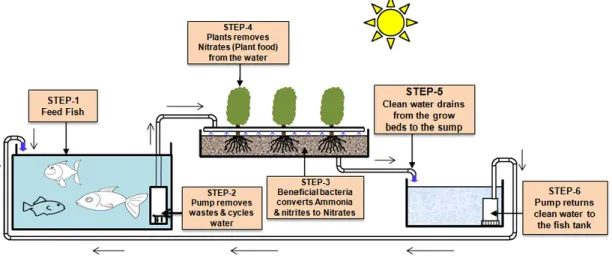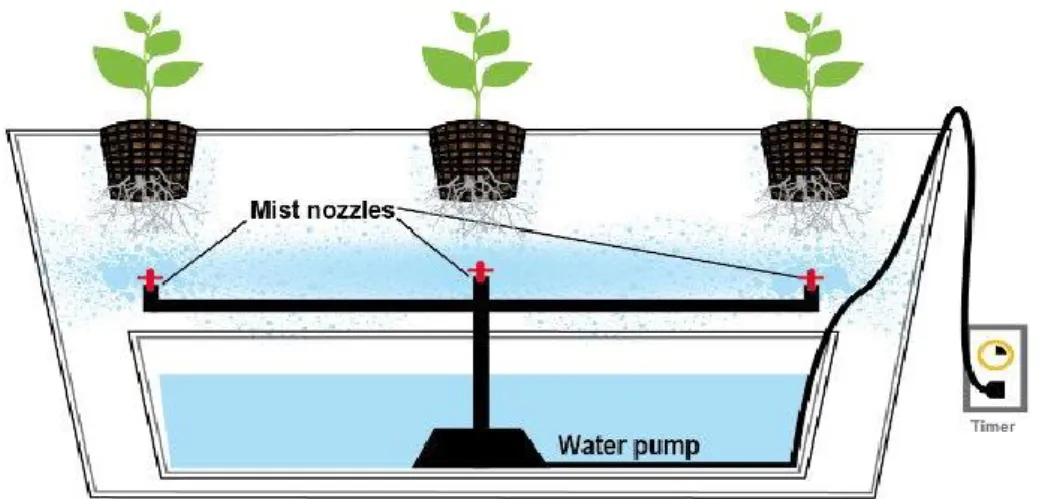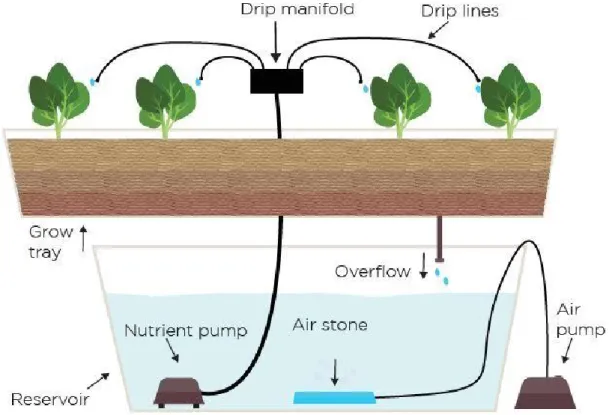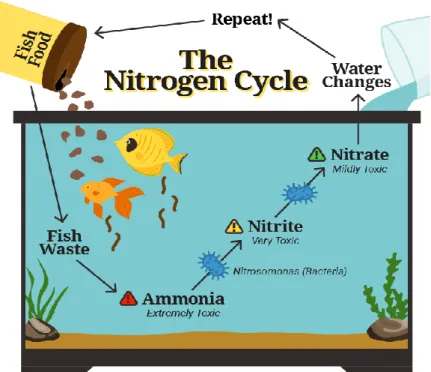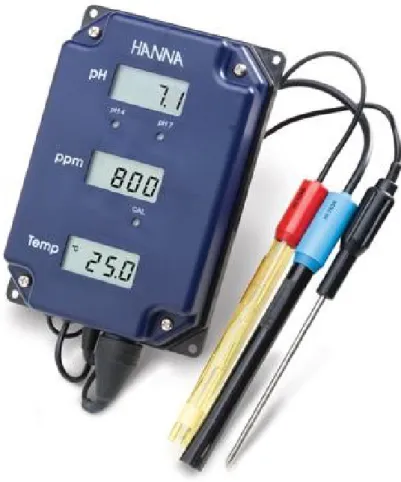Another result of the thesis was a concrete business model canvas for the operation of an aquaponics farm. The main goal of this thesis is to elaborate on the business model canvas one of the business ideas that can later be embodied in real business.
Limitations and focus of the study
The key components of the aquaponics system that are interrelated play a vital role in making the whole system work effectively and efficiently. In this segment, the author explains the business model canvas described by Alexander Osterwalder.
Objective of the thesis and research questions
In addition to fish and their waste, microbes play an important role in plant nutrition. These beneficial bacteria gather in the spaces between the plant's roots and convert fish waste and solids into substances that plants can use for growth.
Aquaculture
Hydroponics
This type of solution is slightly inclined so that the nutrient solution flows by the force of gravity. This type of system works by flooding the growing area with a nutrient solution at set intervals.

Fish Rearing Component
Fish Tank
Another alternative can be stainless steel, but the price is very high and it reacts to salt water. The color of the tank leads to changes in water temperature due to solar heat. The color of the aquarium should be considered according to the area where the aquarium is installed.
Light or white tanks can be used instead of black tanks because black absorbs a significant amount of heat which affects the fish. In extremely cold or warm areas, thermal insulation must be made to adjust the water temperature.
Aeration
To avoid such dead spots, the water pump or air pump should be installed to have a proper circulation and the solid waste disposal. The most common materials used for fish tanks are plastic or high density polyethylene (HDPE) followed by fiberglass.
Filtering Component (Mechanical and Biological)
Mechanical Filter
There is a much less chance of failure in the system if the quality of the water is maintained. Vortex filter is one of the filters to remove the solid waste from the system. The mechanism of the vortex filter to change the speed of the water from the aquarium.
Swirl filter is designed so that the solids are turned along with water from the fish tank by the centrifugal force to the bottom of the tank for easy removal. These fine particles are left at the bottom of the filter and the water is allowed to enter the grow bed or sump.
Bio-filter
The collected solids are washed to the bottom of the filter during a backwash and then drained from the filter and can later be used as fertilizer by the plants. The wastewater is sprayed over the top of the medium and collected in a container below the medium. The great advantage of this filter system is that the water treated in this filter will contain more oxygen due to the availability of a large air-water interface and also this kind of filter removes unwanted gases for the plants such as carbon dioxide and nitrogen.
The shaft is on the surface of the water and it is rotated quietly (Smith 2013, cited. The immersion of the discs is kept at 40% and the shaft rotates continuously in the unit.
Plant Rearing Component
Grow Bed
Grow Media
To prevent root rot or clogging, the water flow system must be carefully managed. Oasis Cubes consist of an open-cell material that can hold water and air, allowing the root to expand and grow vigorously. These pots do not act as a medium, but are designed to hold other media in them, which allows a firm support for the plant.
Since the cups are made of high quality plastic, this makes them a poor reactor for any of the compounds or compounds of fertilizer found in the water. Hydroton is pH neutral, which does not allow any nutrients to be released into the water.
Pumps
Improper pumps lead to the failure of the entire system by killing plants, bacteria and fish. Submersible pumps are the water cooled pumps installed inside the tank where the power is marked by GPH (Gallons Per Hour) and the cost can be directly related to the size of the pump. Whereas inline pumps are air cooled pumps installed outside the tank which are mostly preferred by the larger commercial farms.
There are some steps to follow to find the best possible size pump to install in the system. Before installing the appropriate pump in the system, some of the information should be gathered by simple calculation and observation, such as: Finding the GPH (Gallons Per Hour) or LPH (Liters Per Hour) of the system, the exact head height of the system and comparing the obtained values to the pump diagram , which are available with the pump.
Water Test Kit
The main advantage of indoor farming is that the desired environment for the plants or animal to thrive can be created accordingly by controlling the environmental factors such as lighting, temperature and humidity, which makes indoor farming quite expensive. One of the major differences is depending on some natural phenomena, such as whether and sunlight in the greenhouse, but indoor farming is completely independent of natural phenomena, as shown in Figure 9. In general, indoor farming crops are grown in three dimensions, instead of two. all year round regardless of external weather conditions.

Grow-Lights
Fluorescent light
HID (High-Intensity Discharge) lights
LED Lights
Climate control
In this chapter, the author will discuss the canvas of the business model as well as its importance. Business model canvas can be seen as a concrete foundation for the company and provides the structure of the business plan. The business model canvas is a strategic management tool to define and communicate the business idea or concept in an effective way.
The business model canvas should be simple, understandable and actionable to identify and solve problems. The Business Model Canvas (BMC) is a platform which guides enterprises to reach their customer and helps design their business in a profitable way.
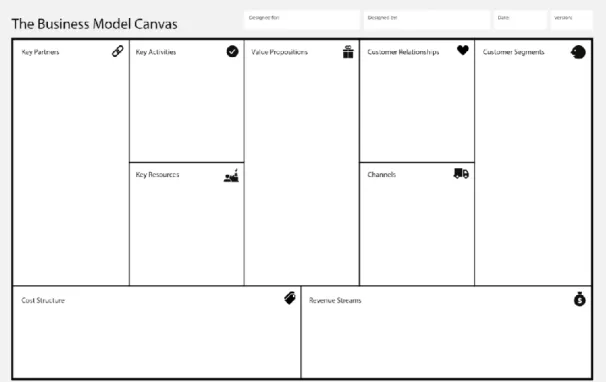
Customer Segments
Correlation between the value proposition, customer segments and revenue streams leads to visualization of the preferred input for both the marketing strategy and the sales strategy. Next, the author will review all nine building blocks of the business model canvas, which focus on the four main areas of business such as customer, product, infrastructure and financial viability.
Value Propositions
Channels
It is very important to choose a perfect mix of channels to satisfy the customer in order to have a value proposition in the market. According to the figure above, an organization can choose its own channels, either through partner channels or both when reaching its customer. Own channels lead to high margin and high operating cost, while partner channels lead to making products available very often with low margins.
It is very important to have a perfect balance between different types of channels so that customers are very satisfied with higher revenues.
Customer Relationship
Revenue streams represent the money generated by each customer segment or, in simple words, the cash flow within the organizations. There are several ways to generate revenue streams, such as: asset sales, usage fees, subscription fees, lending/renting/leasing, licensing, agency fees, and advertising. Each pricing mechanism should be chosen responsibly as different pricing mechanisms can have a huge difference in terms of revenue generated.
There are two types of pricing mechanisms such as the fixed menu pricing and dynamic pricing.
Key Resources
Key Activities
Key Partnership
Cost Structure
According to Osterwalder and Pigneur (2010,41), cost structures have different characteristics such as: fixed costs, variable costs, economies of scale and economies of scale. Economies of scale are cost advantages that a company achieves due to the large volume of operations. Economies of scale are the cost advantage that a company has due to the large volume of operations.
In this chapter, the author embodies a one-page business plan based on the business model canvas for an aquaponics farm in Finland. In general, the aquaponics business idea can be presented in the canvas format of a business model as shown below.
Customer segments
Value Propositions
Channels
Finnish customers fully rely on regular grocery stores, while 27% and 13% depend on specialized organic markets and farms simultaneously. In aquaponic farms, depending on the nature of the product, customer segments and farm size, direct channels may be considered a more effective form of channels than indirect channels. Some of the direct channel platforms can be online shopping and physical stores.
The customer relationship
Revenue streams
Key Resources
Knowledge and skills for effective and successful aquaponics management are key intellectual resources. Therefore, a greater understanding and production of a high-quality product using quality equipment leads to the acquisition of brand reputation, which, among other things, makes the farm unique. In order to set up a successful aquaponic farm, the land and various equipment needed to operate the aquaponic system are the main requirements that can be obtained depending on the start-up capital of the business.
Various equipment are considered as all the components of the aquaponics farm mentioned in chapter 4. Mostly the financial resources consist of the owner's own investment as well as different loans from different sources such as government or private.
Key activities
This equipment varies depending on the crops and types of fish being farmed to generate income. Since then, different technologies are used to set up an indoor aquaponics farm, which required a higher investment.
Key Partners
Cost Structure
Similarly, when growing indoors, the spectrum of the lamps should be maintained in accordance with the selected plants. The products that are designed should benefit the social factors of the community. Quoted from https://www.leafly.com/news/growing/how-to-regulate-temperature-humidity-indoor-marijuana-grow.
2020, from the Australian Academy of Science: https://www.science.org.au/curious/earth-environment/population-environment. Quoted from here is why the nitrogen cycle is important for the health and well-being of your fish!: https://livingartaquatics.com/why-is-the-nitrogen-cycle-important-for-your-aquarium/.
